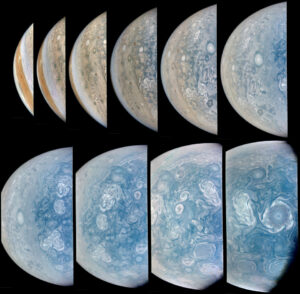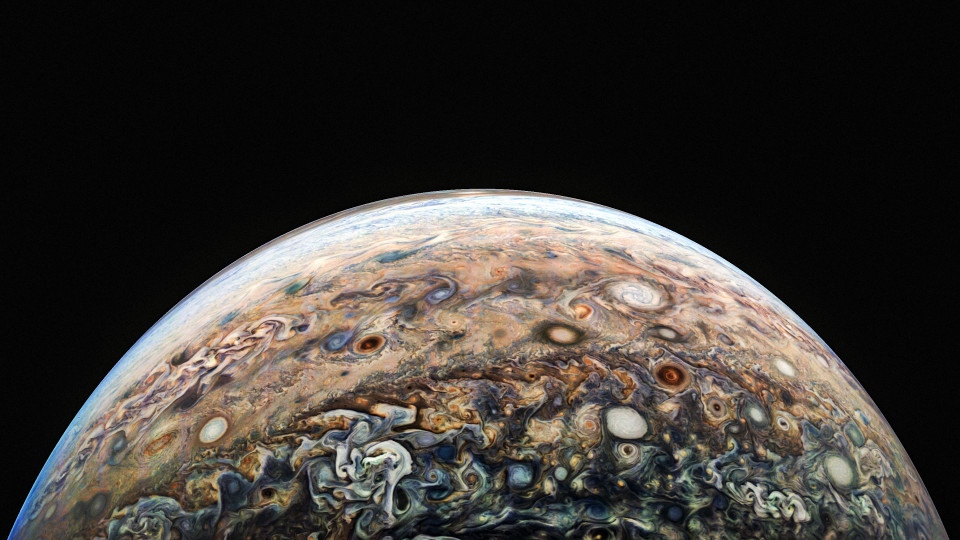Exceptional images from “Juno”
In November 2024, NASA released new images of Jupiter sent by the Juno probe. They include details of the turbulent clouds and poles of the gas giant, capturing a huge variety of the planet’s atmospheric formations.
Juno was launched from Earth in 2011 and reached Jupiter in 2016. Its main task is to analyze the composition of the planet’s atmosphere, magnetic field and internal structure. The mission was initially planned for just 33 orbits but has been extended until 2025 to allow further study of Jupiter, particularly its rings and moons.

Space camera
JunoCam was designed specifically to operate on a rapidly spinning probe that rotates as often as twice per minute. The camera images several lines of pixels at a time, synchronizing the speed of rotation with the exposure time, to avoid smear. It is distinguished by its wide angle of view, allowing it to capture panoramic shots. JunoCam is designed primarily as a tool for popularizing science – “raw” images are made available to the public, and NASA encourages the community of scientists and amateurs around the world to process them, making atmospheric details such as cloud structures, vortices and storm boundaries more visible.
Unique elements of the mission
Also traveling on board of the probe are symbolic artifacts, such as an aluminum plaque with an image of Galileo, commemorating the discovery of Jupiter’s moons in the 17th century. Juno also carries miniature LEGO figures depicting Galileo and the Roman gods Jupiter and Juno, highlighting the educational and cultural dimensions of the mission.
Photos from Juno can be viewed at: Mission Juno.
Source: NASA, Jet Propulsion Laboratory
Cover photo: Jupiter PJ 66 25 | Credit: NASA / JPL / SwRI / MSSS / Gerald Eichstädt / Thomas Thomopoulos © cc by tthomopoulos.






